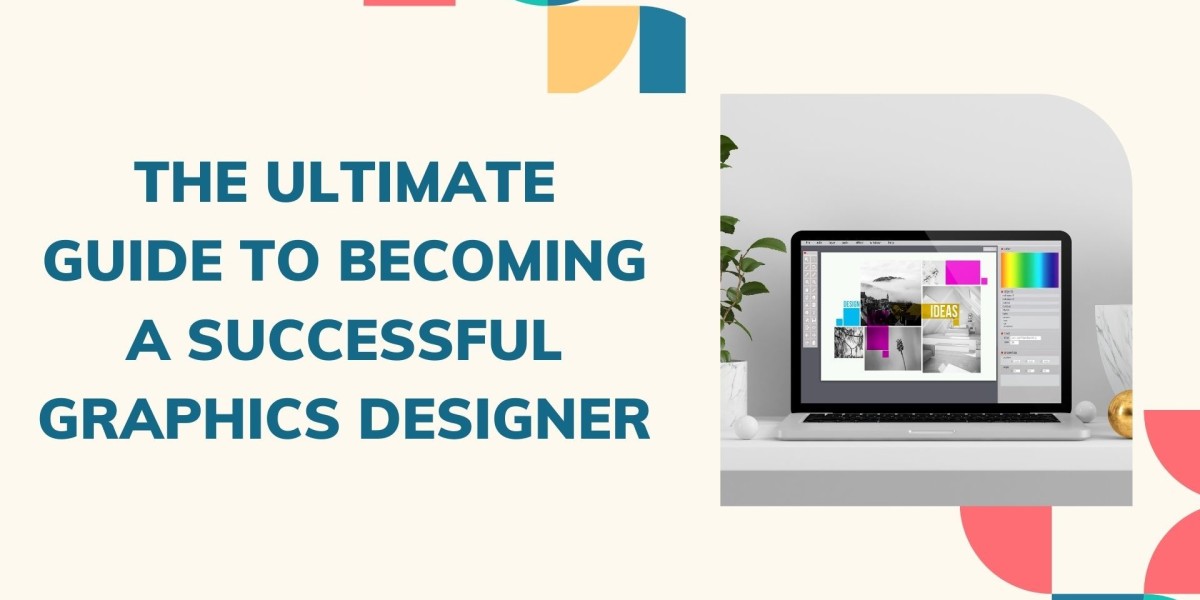Graphic design is a dynamic and exciting field that blends creativity, technology, and communication. Whether you're envisioning designs for websites, logos, advertising materials, or digital illustrations, the role of a graphic designer is crucial in delivering visually compelling messages to diverse audiences. In this comprehensive guide, we'll take you through everything you need to know to become a successful graphic designer—from foundational skills and tools to developing a thriving career.
Understanding the Basics of Graphic Design
Graphic design is the art of combining text, images, and symbols to create visually appealing and effective messages. It involves understanding color theory, typography, layout principles, and visual hierarchy. A successful designer knows how to craft designs that are not only aesthetically pleasing but also functional in conveying the intended message to the audience.
Key Elements of Graphic Design:
Typography: The style, arrangement, and appearance of text.
Color Theory: How different colors interact and influence perception.
Composition: The arrangement of visual elements to create balance and emphasis.
Visual Hierarchy: The way design elements are arranged to guide the viewer’s eye.
Essential Skills Every Graphic Designer Needs
To excel in graphic design, you must acquire a combination of creative, technical, and communication skills. While creativity is at the heart of the profession, the ability to use design software effectively and understand client needs is equally important.
Creative Skills:
Problem-Solving: Graphic designers solve visual problems by creating designs that meet specific goals.
Creativity: The ability to think outside the box and develop innovative concepts is essential for standing out in a competitive field.
Attention to Detail: The smallest elements, such as pixel-perfect alignments, are crucial in creating professional-quality work.
Technical Skills:
Design Software Proficiency: Knowledge of tools like Adobe Creative Suite (Illustrator, Photoshop, InDesign) is fundamental.
Vector and Raster Graphics: Understanding the difference between vector graphics (scalable) and raster images (pixel-based) is key for different design applications.
Web Design & User Experience (UX): Familiarity with design principles for websites, apps, and interactive media.
Communication Skills:
Client Interaction: As a graphic designer, you’ll work with clients to understand their vision, goals, and feedback.
Collaboration: Many projects require collaboration with other designers, marketers, or developers to ensure the design fits within the larger framework of a project.
Choosing the Right Design Tools
While traditional graphic design relied heavily on manual tools, modern designers use a wide range of digital tools that enhance creativity and speed. Familiarity with industry-standard software is crucial for any designer.
Top Tools for Graphic Designers:
Adobe Photoshop: Industry-standard software for photo editing and raster-based designs.
Adobe Illustrator: Ideal for creating vector designs such as logos, illustrations, and icons.
Adobe InDesign: Best for layout design, especially for printed materials like brochures, magazines, and books.
Sketch & Figma: Popular tools for web and mobile interface design.
Procreate: A favorite for digital illustration and drawing.
While these tools are essential for day-to-day work, knowing how to use them in conjunction with each other will greatly improve your versatility and efficiency as a designer.
Building a Portfolio That Stands Out
A graphic design portfolio is your most important asset. It showcases your skills, experience, and design style to potential clients or employers. A strong portfolio demonstrates your ability to solve problems creatively and adapt to different design needs.
Tips for Creating a Winning Portfolio:
Curate Your Best Work: Focus on quality over quantity. Choose designs that showcase your range and abilities.
Include Case Studies: Walk your audience through the design process—from initial concept to final product. This demonstrates your problem-solving and creative thinking skills.
Show Variety: Include a mix of different projects, such as branding, digital design, print design, and more, to appeal to a wider range of potential clients.
Update Regularly: Keep your portfolio current with new work and designs to show that you’re continuously evolving.
Finding Your Niche
Graphic design is a broad field, and as you gain experience, it’s important to find a niche that aligns with your strengths and passions. Whether it’s branding, UX/UI design, web design, illustration, or motion graphics, finding a specialty can help you stand out and attract more clients.
Common Graphic Design Niches:
Branding & Identity Design: Crafting logos, brand guidelines, and visual identities.
Web and UX/UI Design: Creating user-friendly websites, apps, and digital experiences.
Packaging Design: Designing product packaging that stands out on shelves and communicates the brand’s message.
Motion Graphics & Animation: Bringing designs to life through animation, video, and interactive media.
Illustration: Custom artwork for various purposes, from editorial to digital illustrations.
Learning and Staying Updated
The world of graphic design is constantly evolving, with new tools, trends, and techniques emerging every year. As a graphic designer, you must commit to lifelong learning to stay relevant in the industry.
Ways to Keep Improving:
Take Courses: Many online platforms, such as Coursera, Udemy, and Skillshare, offer courses in graphic design. These can help you master new software or stay updated on trends.
Follow Design Blogs & Tutorials: Websites like Behance, Dribbble, and AIGA feature design inspiration and tutorials to help you grow.
Attend Design Events & Conferences: Networking and learning from industry professionals at events can give you fresh insights and ideas.
Practice Regularly: The more you design, the better you’ll get. Challenge yourself with personal projects or collaborations to improve your craft.
Freelancing vs. Full-Time Employment
Once you’ve honed your skills and built a strong portfolio, it’s time to decide whether you want to pursue freelancing or seek full-time employment as a graphic designer. Both paths offer their own advantages and challenges.
Freelancing:
Flexibility: Freelancers can choose their clients and work schedule.
Variety: Working on a range of projects allows for creative diversity.
Business Skills: Freelancers must manage their own contracts, invoices, and taxes.
Full-Time Employment:
Job Stability: Full-time positions provide a steady income and benefits.
Team Collaboration: Working with a team can foster creative growth and opportunities for mentorship.
Specialization: Full-time roles may allow you to specialize in a specific area, such as web design or branding.
Building a Strong Client Base
Regardless of whether you are freelancing or working full-time, a successful graphic designer needs to build a strong client base. Networking, personal branding, and excellent client relationships are all vital in creating a sustainable career.
Tips for Building a Client Base:
Network Actively: Attend design events, connect with potential clients on LinkedIn, and collaborate with other creatives to expand your reach.
Create a Personal Brand: Your own design style and online presence should reflect your skills and expertise. Build a professional website and maintain an active social media presence.
Provide Exceptional Service: Word-of-mouth recommendations are powerful in the design world. Always go the extra mile to satisfy your clients and build long-term relationships.
Getting Paid What You’re Worth
As a graphic designer, you should feel confident in setting rates that reflect your skills and the value you bring to clients. Research the market to understand industry standard rates, and don’t be afraid to raise your prices as your experience grows.
Pricing Tips:
Hourly Rates vs. Project-Based Fees: Decide whether to charge by the hour or offer fixed fees for specific projects. Both have pros and cons depending on the type of work.
Know Your Worth: Don’t undersell your services. Charge what you feel your skills, experience, and portfolio deserve.
Offer Tiered Packages: If you’re freelancing, consider offering different pricing tiers based on the scope of work, ensuring that clients can choose an option that works for their budget.
Staying Inspired and Avoiding Burnout
Graphic design can be an intense profession, and burnout is a real concern. It's essential to find ways to stay inspired and manage stress while maintaining a high level of creativity.
Tips for Staying Inspired:
Take Breaks: Step away from your desk regularly to refresh your mind.
Explore Other Art Forms: Inspiration can come from anywhere—art, photography, architecture, and even nature can fuel your creativity.
Collaborate with Others: Working on group projects or collaborating with other designers can provide fresh perspectives and ideas.
Conclusion
Becoming a successful graphic designer is a journey that requires continuous learning, creative exploration, and business acumen. By building strong foundational skills, mastering the right tools, creating a standout portfolio, and developing your personal brand, you can set yourself on the path to a fulfilling and prosperous career in graphic design. Remember, success in design isn’t just about mastering the technical aspects—it's about creativity, adaptability, and a passion for visual storytelling.










